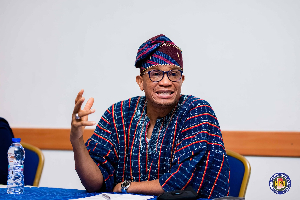Obuasi, Jan 16, GNA - Non-government organisations (NGOs) and other groups working towards the fight against HIV/AIDS have been called upon to strengthen their advocacy to make it possible for AIDS victims to access anti-retroviral drugs along the National Health Insurance Scheme (NHIS).
Dr Samuel Osei-Somuah, the Obuasi Municipal Director of Health Services, said efforts towards HIV/AIDS activities would be defeated if the victims continued to die as a result of monetary difficulties in accessing the drugs. He was speaking at a community mobilization programme at Obuasi Government Hospital organised by the Private Enterprise Foundation (PEF). Under the Treatment Acceleration Project (TAP), PEF in collaboration with the National AIDS Control Programme (NACP), the Ghana AIDS Commission (GAC) and the World Bank had focused on five elements of treatment of the pandemic. These are voluntary counselling and testing (VCT), home-based care, prevention of opportunistic infections, anti-retroviral treatment and prevention of mother-to-child transmission. Dr Osei-Somuah said though the prevalence rate of the disease had gone down from six per cent to 3.6 per cent in the municipality, the rate was still above the national average. He expressed concern about the late release of funds for HIV/AIDS activities and appealed to the Obuasi Municipal Assembly to help in that direction so that the Municipal Response Initiative (MRI) could start work in the early months of the year where numerous social activities help to increase the cases of the pandemic. Mr Isaac Decardi-Nelson, the Northern Sector Co-ordinator of PEF, said eight health facilities in the Ashanti Region had been equipped with machines to help people to know their HIV status. They included the Komfo Anokye Teaching Hospital in Kumasi, Obuasi Government Hospital, AngloGold Ashanti, Pramso Saint Michael's Catholic Hospital and Offinso Saint Patrick's Hospital. The rest are South Suntreso Hospital in Kumasi, Bomso Clinic and Sefwi-Asafo Hospital. Mr Decradi-Nelson explained that the community mobilization programme was intended to sensitise communities around the health facilities about the availability of those machines and the need for them to access them to know their health status.
Health News of Wednesday, 16 January 2008
Source: GNA
















